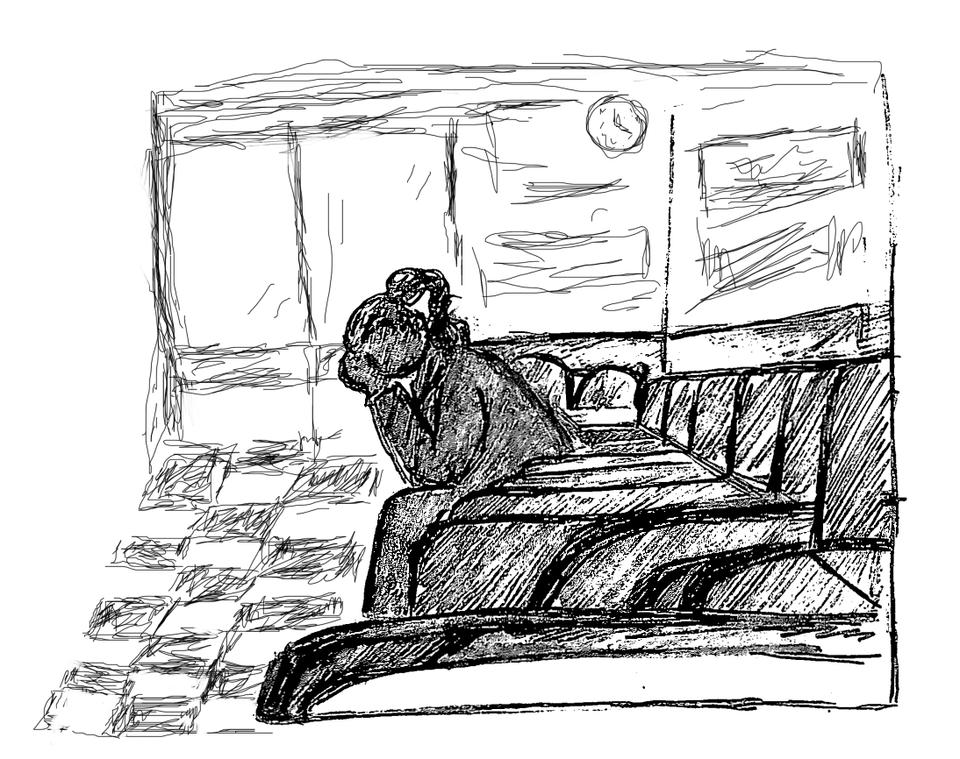
News
Cambridge Residents Slam Council Proposal to Delay Bike Lane Construction

News
‘Gender-Affirming Slay Fest’: Harvard College QSA Hosts Annual Queer Prom

News
‘Not Being Nerds’: Harvard Students Dance to Tinashe at Yardfest

News
Wrongful Death Trial Against CAMHS Employee Over 2015 Student Suicide To Begin Tuesday

News
Cornel West, Harvard Affiliates Call for University to Divest from ‘Israeli Apartheid’ at Rally
Oates Mourns, Recounts Devastating 'Widow's Story'
'A Widow's Story' by Joyce Carol Oates (Ecco)

Baruch de Spinoza wrote that “all creatures yearn to persist in their being,” an insight that explains the momentum propelling Joyce Carol Oates’s new memoir, “A Widow’s Story.” Oates weaves a graceful and captivating tale about what it is like to watch a loved one cease to persist in his or her being and how survivors must learn to live without those they love.
Oates begins by recounting her husband Ray’s initial admission to the hospital for an E. coli infection, presented in fragmented sentences and episodes that evoke Oates’s troubled stream of consciousness. The narrative then describes Ray’s worsening condition, and follows her as she mourns his untimely death. Oates must deal with the practical aftermath of Ray’s death—funeral plans, sorting through his belongings, medical bills—as she is forced to learn on the job how to be a widow.
From the opening of the memoir, Oates sweeps readers into a whirlwind of confusion, passion, and sorrow. Oates renders herself extremely vulnerable throughout the story. She opens up her heart, mind, and soul to all of the pain caused by this sudden and devastating change in her life. It is abundantly clear that Oates uses this memoir for personal catharsis. Her transformation from being happily married to being an accepting widow occurs as she progresses through the writing of the book.
Oates brilliantly manipulates her prose to make her story compelling on multiple levels. Initially, one might feel compassion for Oates and mourn the termination of her married life along with her. However, this involvement extends further, burrowing deep into the heart of the story. In nostalgic anecdotes about her husband and descriptions of her despair Oates convincingly recreates the thoughts, daydreams, and distractions that make up the process of mourning.
Oates focuses on the minutiae of her daily life and the experience of having a loving relationship with another individual. Her emphasis is not on her specific experiences but on the emotions behind them. This makes for a wrenching and utterly relatable memoir. At one point Oates wakes up in the middle of the night to the ‘dread’ of a “phone ringing at the wrong time” to receive the news that her husband is in critical condition. Rather than focusing on this episode’s role in her own narrative, she instead emphasizes that “we all know this dread. There is no escape from this dread.” It is easy to generalize Oates’ experience of “embark[ing] upon the hospital vigil as in a small canoe on a churning white-water river,” because she puts her experience in such universal terms.
“A Widow’s Story” is also a success in form. Oates does not miss a single chance to alter her book’s structure and style to reflect her own emotions; she thus forces even skeptical readers to experience her new reality. For example, Oates literalizes her devastation and emotional stasis by leaving the memoir’s page numbers unlisted. Instead, each chapter begins on page ‘000.’ The experience of reading the book then mirrors the confusion and stasis that Oates feels in her own life. Similarly, Oates deviates frequently from the story’s chronological plot: she offers digressions that are triggered by “memory pools” lurking in the corners of the mind and the shadows of the memory. These flashbacks painstakingly recreate the inner experience of mourning, and defy an emotionally detached reading.
Oates also alters her structure by ending chapters in the third person. She shifts from her own first-person account of to a third-person narrator viewing her story from the outside. These abrupt shifts to a more removed tone make the memoir intellectually stimulating as well as emotionally powerful. Oates becomes the character of “the Widow” or “the Widow-to-Be;” these detached examinations of her widowhood become their own story. Instead of simply stating that she would not research E. coli while her husband was hospitalized, Oates writes, “Something of the derangement of Widowhood is beginning here ... In denial that her husband is seriously ill the Widow-to-Be will not, when she returns home that evening, research E. coli on the Internet.” This unique technique breaks up the lengthy first-person narrative and prevents monotony. Through this technique, Oates keeps the narrative moving and builds a sense of anticipation despite her own emotional inertia.
More than anything, this memoir is a story of survival after devastation, learning to move on after life seems shattered. The essence of “A Widow’s Story” is perfectly and elegantly summed up by the last chapter, entitled “The Widow’s Handbook.” Oates concludes with a message of hope: “Of the widow’s countless death-duties there is really just one that matters: on the first anniversary of her husband’s death the widow should think I kept myself alive.”
Want to keep up with breaking news? Subscribe to our email newsletter.
